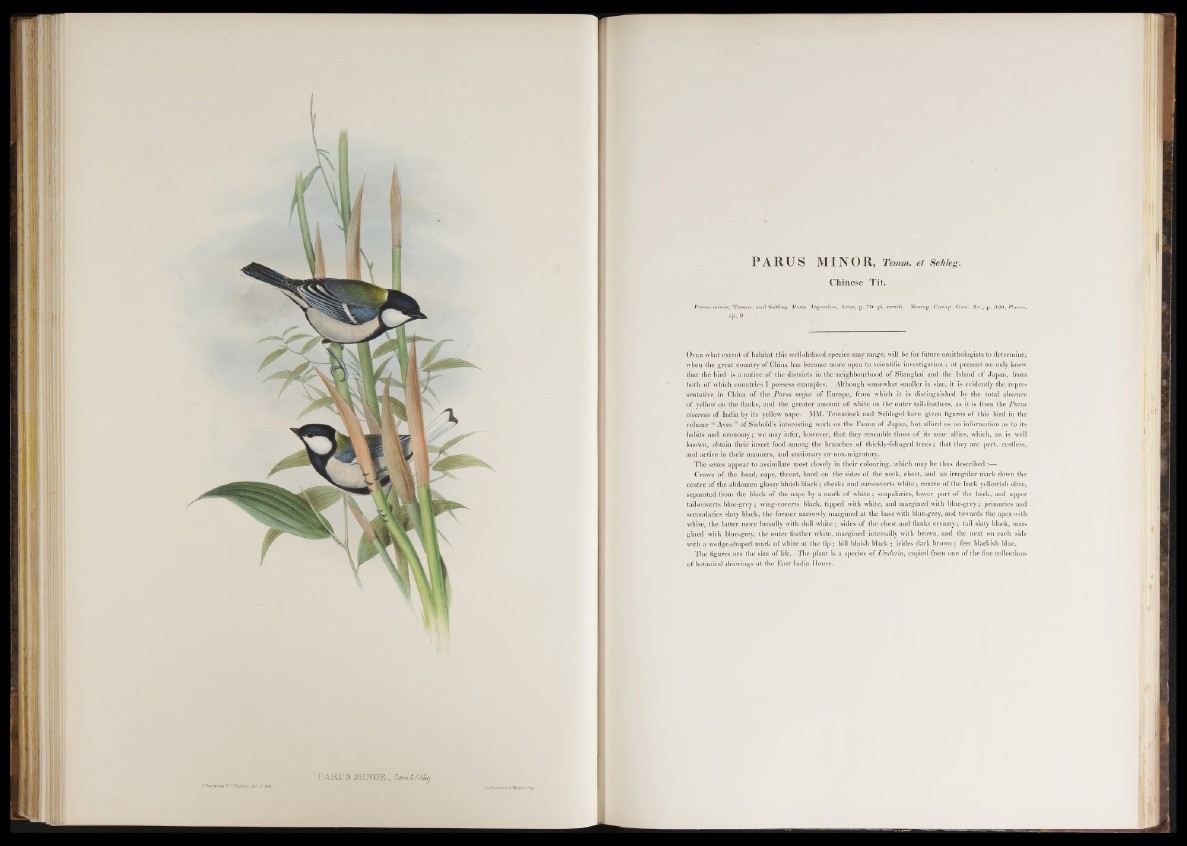
FARITS MI TmmkSé.
P A R U S M I N O R , Temm. et Schleg.
Chinese Tit.
Parus minor, Temm. and Schleg. Faun. Japónica, Aves, p. 70. pi. xxxiii.—Bonap. Consp. Gen. Av., p. 229, Parus,
sp. 9, .
O v er what extent of habitat this well-defined species may range, will be for future ornithologists to determine,
when the great country of China has become more open to scientific investigation ; a t present we only know
that the bird is a native of the districts in the neighbourhood of Shanghai and the Island of Japan, from
both of which countries I possess examples. Although somewhat smaller in size, it is evidently the representative
in China of the Parus major o f Europe, from which it is distinguished by the total absence
of yellow on the flanks, and the greater amount of white on the outer tail-feathers, as it is from the Parus
cinereus of India by its yellow nape. MM. Temminck and Schlegel have given figures of this bird in the
volume “ Aves ” o f Siebold’s interesting work on the Fauna of Japan, but afford us no information as to its
habits and economy; we may infer, however, that they resemble those of its near allies, which, as is well
known, obtain their insect food among the branches of thickly-foliaged tre e s ; that they are pert, restless,
and active in their manners, and stationary or non-migratory.
The sexes appear to assimilate most closely in their colouring, which may be thus described :—
Crown of the head, nape, throat, band on the sides of the neck, chest, and an irregular mark down the
centre of the abdomen glossy bluish black; cheeks and ear-coverts white; centre of the back yellowish olive,
separated from the black of the nape by a mark of wh ite; scapularies, lower part of the back, and upper
tail-coverts blue-grey ; wing-coverts black, tipped with white, and margined with blue-grey; primaries and
secondaries slaty black, the former narrowly margined at the base with blue-grey, and towards the apex with
white, the latter more broadly with dull white ; sides o f the chest and flanks creamy; tail slaty black, margined
with blue-grey, the outer feather white, margined internally with brown, and the next on each side
with a wedge-shaped mark of white at the t ip ; bill bluish black ; irides dark brown ; feet blackish blue.
The figures are the size of life. The plant is a species of Uvularia, copied from one of the fine collections
of botanical drawings at the East India House.